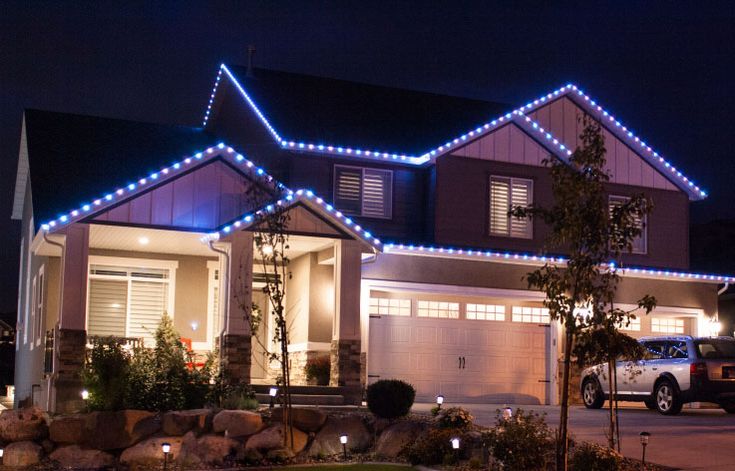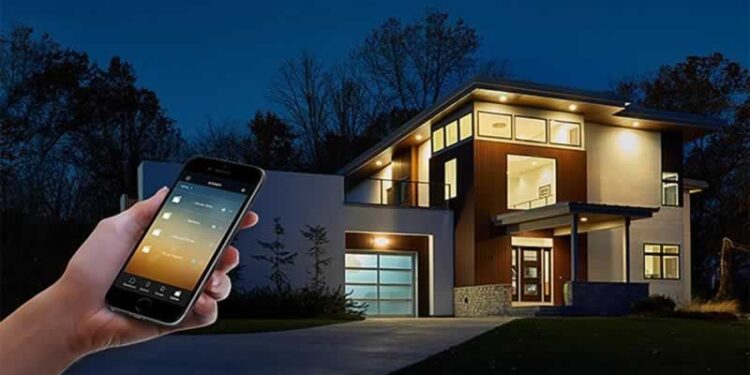Lighting plays a pivotal role in shaping the mood, functionality, and overall aesthetic of any garden. With the rapid evolution of technology, smart lighting has become a transformative solution, offering homeowners unparalleled control and customization. This article explores how smart lighting elevates garden ambiance, while providing practical tips to optimize its use for both beauty and practicality.
Smart Garden Lighting
Smart lighting refers to a system of connected light fixtures that can be controlled remotely using smartphones, tablets, or voice commands through virtual assistants like Alexa, Google Assistant, or Siri. Unlike traditional lighting, smart systems offer flexibility in brightness, color, scheduling, and automation.
Key Features of Smart Lighting Systems
A. Remote Control
Smart lights can be operated from anywhere using mobile apps, allowing homeowners to adjust their garden lighting even while away.
B. Customization of Colors
Many smart lighting products offer millions of color choices, enabling unique hues to match different moods, seasons, or special occasions.
C. Automated Scheduling
Set specific times for lights to turn on or off, creating routines that align with sunrise, sunset, or personal preferences.
D. Energy Efficiency
LED-based smart lights consume less power compared to conventional bulbs, reducing electricity bills while promoting sustainability.
E. Integration with Smart Home Ecosystems
Smart garden lights can sync with other devices, such as motion sensors or security cameras, for a cohesive smart home experience.
Advantages of Installing Smart Lighting in Gardens
Implementing smart lighting in outdoor spaces provides numerous benefits beyond simple illumination.
A. Enhanced Aesthetics
With adjustable brightness and color temperatures, smart lighting enhances the beauty of landscaping features, highlighting plants, trees, pathways, and water elements.
B. Improved Safety and Security
Well-lit gardens deter trespassers and minimize the risk of tripping or falling over obstacles at night. Integration with motion detectors adds an extra layer of security.
C. Greater Convenience
Forget about manually switching lights on and off. Automated schedules or voice commands streamline the entire process.
D. Mood Setting for Events
Whether hosting a garden party or enjoying a quiet evening outdoors, smart lighting allows you to adjust ambiance instantly to fit the occasion.
E. Weather Adaptability
Many smart lights are designed to withstand outdoor conditions, offering waterproof and dustproof properties suitable for any climate.
Best Practices for Using Smart Garden Lighting
To maximize the benefits of smart lighting, consider the following recommendations:
A. Plan Lighting Zones
Divide your garden into different zones such as dining areas, walkways, flower beds, and water features. Assign different lighting styles and intensities to each.
B. Use Layered Lighting Techniques
Combine various types of lights—spotlights, path lights, string lights, and wall lights—for depth and dimension.
C. Highlight Focal Points
Identify key features in your garden, like a fountain or a sculpture, and use accent lighting to draw attention to them.
D. Install Motion Sensors
Motion-activated lights add security and convenience, automatically illuminating pathways or dark corners when movement is detected.
E. Incorporate Dimmers
Adjusting brightness levels allows you to create a more intimate or dramatic atmosphere depending on the situation.
F. Opt for Solar-Powered Smart Lights
Reduce energy consumption further by choosing solar-powered options, which charge during the day and light up automatically at night.
Popular Smart Lighting Products for Gardens

Several leading brands offer smart lighting solutions tailored for outdoor use. Here are some popular options:
A. Philips Hue Outdoor
This product line includes spotlights, wall lights, and pathway lights with app and voice control, offering millions of color choices.
B. Ring Smart Lighting
Combines outdoor lights with security features, integrating with cameras and motion sensors for enhanced safety.
C. LIFX Outdoor Bulbs
Provides Wi-Fi-enabled bulbs with vivid colors and customizable settings without needing a separate hub.
D. Sengled Smart Floodlights
Ideal for illuminating large areas with bright, adjustable beams that connect to smart hubs or voice assistants.
E. Nanoleaf Elements
Offers modular, decorative lighting panels that can be arranged creatively on exterior walls for an artistic touch.
Installation Tips for Smart Garden Lighting
Installing smart lighting requires thoughtful placement and proper setup to achieve optimal results.
A. Check Wi-Fi Coverage
Ensure your garden has strong Wi-Fi signal coverage to avoid connectivity issues with smart devices.
B. Use Weatherproof Fixtures
Select lighting rated for outdoor use to withstand rain, wind, and extreme temperatures.
C. Position Lights Strategically
Avoid placing lights where they may cause glare or shine directly into windows. Aim beams toward features rather than open spaces.
D. Test Configurations Before Final Setup
Experiment with different angles and brightness levels at night before permanently installing fixtures.
E. Use Smart Plugs for Non-Smart Fixtures
If you already own outdoor lights that aren’t smart-enabled, smart plugs can make them programmable and remotely controllable.
Integrating Smart Lighting with Garden Design
Smart lighting is more than functional—it contributes to the overall design and atmosphere of your outdoor space. Consider the following design strategies:
A. Create Pathway Guides
Illuminated paths help guide guests safely while adding a welcoming touch to your garden.
B. Use Uplighting for Trees
Install uplights at the base of trees to create dramatic shadows and emphasize height.
C. Incorporate Color Washes
Cast colored light onto walls, fences, or hedges to add visual interest and break up large blank spaces.
D. Accent Water Features
Water elements like ponds or fountains sparkle beautifully under soft, focused lighting.
E. Balance Light and Shadow
Avoid over-lighting by maintaining a balance of illuminated and shaded areas to preserve a sense of depth.
Common Mistakes to Avoid
When setting up smart lighting in a garden, be mindful of these pitfalls:
A. Overusing Brightness
Too much light can wash out natural beauty and cause discomfort.
B. Ignoring Light Pollution
Be respectful of neighbors and local wildlife by using shielded fixtures and aiming lights downward.
C. Poor Placement
Lights placed too high, too low, or in the wrong angle can create glare or ineffective coverage.
D. Overcomplicating Controls
Stick with simple, intuitive controls to avoid frustration when operating your lighting system.
E. Neglecting Maintenance
Regularly clean and inspect fixtures to ensure optimal performance and longevity.
Future Trends in Smart Garden Lighting

Smart lighting technology continues to evolve, bringing exciting innovations to outdoor spaces:
A. AI-Driven Lighting Systems
Artificial intelligence will enable lights to learn user preferences and adapt automatically.
B. Integration with Environmental Sensors
Future lights may respond to weather changes, adjusting brightness or color based on temperature or humidity.
C. Enhanced Solar Capabilities
Improved solar panels and batteries will increase the reliability and efficiency of solar-powered smart lights.
D. Voice Control Advancements
Voice commands will become more intuitive, offering complex controls like setting scenes or adjusting groups of lights simultaneously.
E. Interactive Lighting Experiences
Expect more interactive features, such as syncing lights with music or creating dynamic color patterns.
Conclusion
Smart lighting has revolutionized outdoor living spaces, merging functionality, aesthetics, and technology. By thoughtfully integrating smart lighting into your garden design, you can create an enchanting, safe, and energy-efficient environment that adapts to every occasion. Whether you’re relaxing alone under a softly lit pergola or entertaining guests with vibrant colors, smart lighting puts control—and creativity—at your fingertips.














